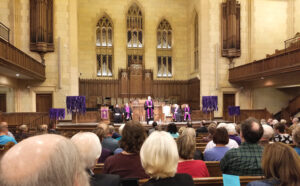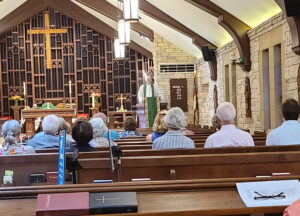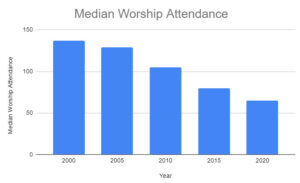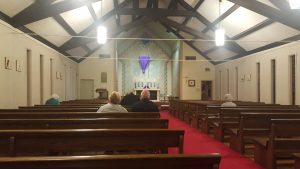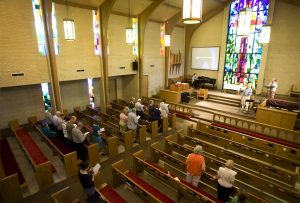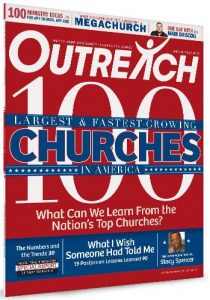Unlike most data about church attendance that relies on self-reported responses to survey questions, a new working paper by Devin G. Pope relies on cell phone data. And, amazingly, finds that "73% of people step into a religious place of worship at least once during the year on the primary day of worship (e.g. Sundays for most Christian churches)" Exploring the 73% It is astonishing that more than 7 in 10 Americans physically show up in houses of worship at least once a year. It is even Read More …
attendance
In-Person Worship Attendance: Continued Challenges (#1981)
In a pre-pandemic world, when people mentioned attending worship, I assumed they were speaking of an in-person experience. This assumption in no way minimizes the many ways in my lifetime people have heard and/or seen services of worship without being physically present - from the days of audio cassette tapes to the more recent options of livestreaming. I was taught that these supplemental approaches worked well for niche audiences, such as those who were homebound, ill, or traveling. Since Read More …
Worship Attendance Cut in Half (#1972)
Three common measures of success for local churches are worship attendance, annual budgets, and facilities (sometimes referred to as butts, bucks, and buildings). Worship Attendance Congregations vary widely in size. Comparing them based on membership appears attractive until you learn that membership means different things in different traditions, and even within a given denomination individual congregations have different expectations of how one becomes a member and what one must do to Read More …
Another Decade of Major Decline in The Episcopal Church (#1823)
Earlier this week Episcopal priest Tom Ferguson wrote a piece titled "The Collapse is Here," exploring The Episcopal Church's recently published statistics on Sunday worship attendance from 2008 to 2018. Ferguson offers several high level observations about what has happened and what the Episcopal Church looks like today: Average attendance dropped 25% (24.7%) between 2008 and 2018. Average attendance in 2018 was 562,529.There are now more parishes with an average attendance of less than 10 Read More …
Reflections on Average Worship Attendance (#1610)
Most American churches have relatively small memberships. Since the accuracy of membership roles varies widely, average weekly worship attendance is often used to compare congregational size. Median American congregation has 75 attend weekly worship (National Congregations Survey) Average American congregation has 186 attend weekly worship (US Congregational Survey) Half (50%) of all church attendance is accounted for by the largest 10% of congregations - those with 350+ average Read More …
Worship Swap (#1038)
Earlier this month, the Pew Research Center reported that data from the General Social Survey shows a role reversal in worship attendance when comparing Catholics and Protestants. More specifically: In 1974, Catholics were more likely than Protestants to report attending religious services at least once a week (47% vs. 29%). By 2012, the situation had reversed: Protestants overall were more likely than Catholics to say they attend church weekly or more often (38% vs. 24%). So Read More …
So Many Dwindling Congregations (#1012)
The cover story of the January 2013 edition of The Lutheran is "Shrinking Church," an article focusing on the pragmatic issues of decline within the Evangelical Lutheran Church in America (ELCA). To substantiate the problem, Nicole Radziszewski notes the following statistics about the ELCA: In 2010, almost 30% of congregations had an average worship attendance of fewer than 50 people. From 2003 to 2011, average weekly worship attendance dropped 26%. From 2009 to 2010, Read More …
Largest & Fastest Growing Churches (#0859)
Outreach Magazine's new special issue focused on the largest and fastest growing churches in America is packed with information. While I always look at the lists of the 100 fastest growing and the 100 largest congregations (based on worship attendance), this year I was struck by the classification of the congregations making both lists. More specifically, both lists are dominated by churches characterized as nondenominational or interdenominational. They comprise Read More …
